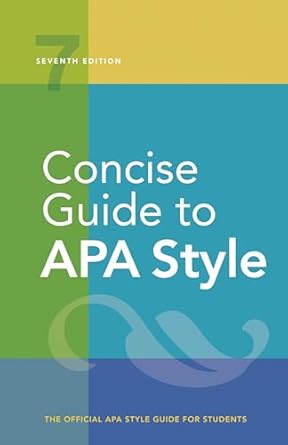[toc]
citation guide review mastering academic referencing
Concise Guide to APA Style: 7th Edition (OFFICIAL)
Page 287 Review
Book Review: Navigating Citations in Academic Writing
This excerpt from a guide on textual works provides invaluable information on how to properly cite sources in academic writing, adhering to specific guidelines.
Let’s delve into some key areas highlighted in this section.
Citing Chapters in Multivolume Works
The guide addresses the complexities of citing chapters within multivolume works.
It provides a clear example:
“Goldin-Meadow, S. (2015).
Gesture and cognitive development.
In L.
S.
Liben & U.
Mueller (Eds.), Handbook of child psychology and developmental science: Vol. 2.
Cognitive processes (7th ed., pp. 339-380).
John Wiley & Sons. https://doi.org/10.1002/9781118963418.childpsy209″
This example demonstrates the proper format for including the author of the chapter, the year of publication, the chapter title, the editors of the handbook, the handbook title, the volume number, the edition, the page numbers, the publisher, and the DOI.
The guide further explains the citation formats:
“Parenthetical citation: (Goldin-Meadow, 2015)”
“Narrative citation: Goldin-Meadow (2015)”
These demonstrate how to cite the source within the text, both parenthetically and narratively.
It’s crucial to understand when to use each format to maintain clarity and flow in your writing.
Important clarifications are also provided:
“If the volume has both series editors (or editors-in-chief) and volume editors, only the volume editors appear in the reference.”
“The volume in this example has its own title.
See Example 30 for how to include untitled volume information in parentheses after the book title.”
These notes highlight the importance of paying close attention to the structure of the source material and adjusting the citation accordingly.
Citing Works in Anthologies
The guide also covers how to cite works that appear in anthologies:
“Lewin, K. (1999).
Group decision and social change.
In M.
Gold (Ed.), The complete social scientist: A Kurt Lewin reader (pp. 265-284).
American Psychological Association. https://doi.org/10.1037/10319-010 (Original work published 1948)”
This example showcases how to include the original publication date when citing a work that has been republished in an anthology.
The citation formats are as follows:
“Parenthetical citation: (Lewin, 1948/1999)”
“Narrative citation: Lewin (1948/1999)”
Again, the use of both parenthetical and narrative citation styles are illustrated.
The guide also emphasizes:
“Works that have been published elsewhere before appearing in an anthology are treated as being republished (see Section 9.40) rather than reprinted.”
This distinction is important for accurately representing the source’s publication history.
Citing Entries in Dictionaries, Thesauruses, or Encyclopedias
The guide provides guidance on citing entries from reference works, especially when the author is a group:
“American Psychological Association. (n.d.).
Positive transference.
In APA dictionary of psychology.
Retrieved September 30, 2019, from https://dictionary.apa.org/positive-transference”
“Merriam-Webster. (n.d.).
Self-report.
In Merriam-Webster.com dictionary.
Retrieved September 12, 2019, from https://www.merriam-webster.com/dictionary/self-report”
These examples demonstrate how to cite entries from online dictionaries and encyclopedias, including the group author, the entry title, the name of the reference work, the retrieval date, and the URL.
The guide specifies the citation styles:
“Parenthetical citations: (American Psychological Association, n.d.; Merriam-Webster, n.d.)”
“Narrative citations: American Psychological Association (n.d.) and Merriam-Webster (n.d.)”
This highlights how to cite multiple sources with the same year (or no date) within the same parenthetical citation and narrative citation.
Key Takeaways and Importance of Accurate Citation
This excerpt emphasizes the importance of providing accurate and consistent citations in academic writing.
The specific examples and guidelines provided cover a range of common source types, including chapters in multivolume works, works in anthologies, and entries in dictionaries and encyclopedias.
By following these guidelines, writers can ensure they are properly attributing sources, avoiding plagiarism, and giving credit where it is due.
Understanding the nuances of citation, such as how to handle republished works or sources with group authors, is crucial for maintaining academic integrity.
The inclusion of both parenthetical and narrative citation examples further enhances the practical value of this guide.
The guide clearly and concisely presents the information which is imperative for producing high quality academic works.
Attention to detail and adhering to these guidelines not only strengthens the credibility of the work but also allows the reader to easily locate and verify the sources used.
Buy full ebook for only $18: https://www.lulu.com/shop/american-psychological-association/concise-guide-to-apa-style-7th-edition-official/ebook/product-rmzpq54.html?page=1&pageSize=4
Citation Guide Review Mastering Academic Referencing
Read more: Reduce Bias in Writing: Guidelines for Inclusive Language


Leave a Reply